A deep dive inside the creators of these theatrical looks
Spectators fill the seats waiting anxiously for a dazzling performance. The lights are set and the actors are behind the curtain preparing to take the stage. The cast and crew work for weeks on end to put on a show at The Theatre School at DePaul (TTS), but some behind the scenes have been preparing for this moment for months.
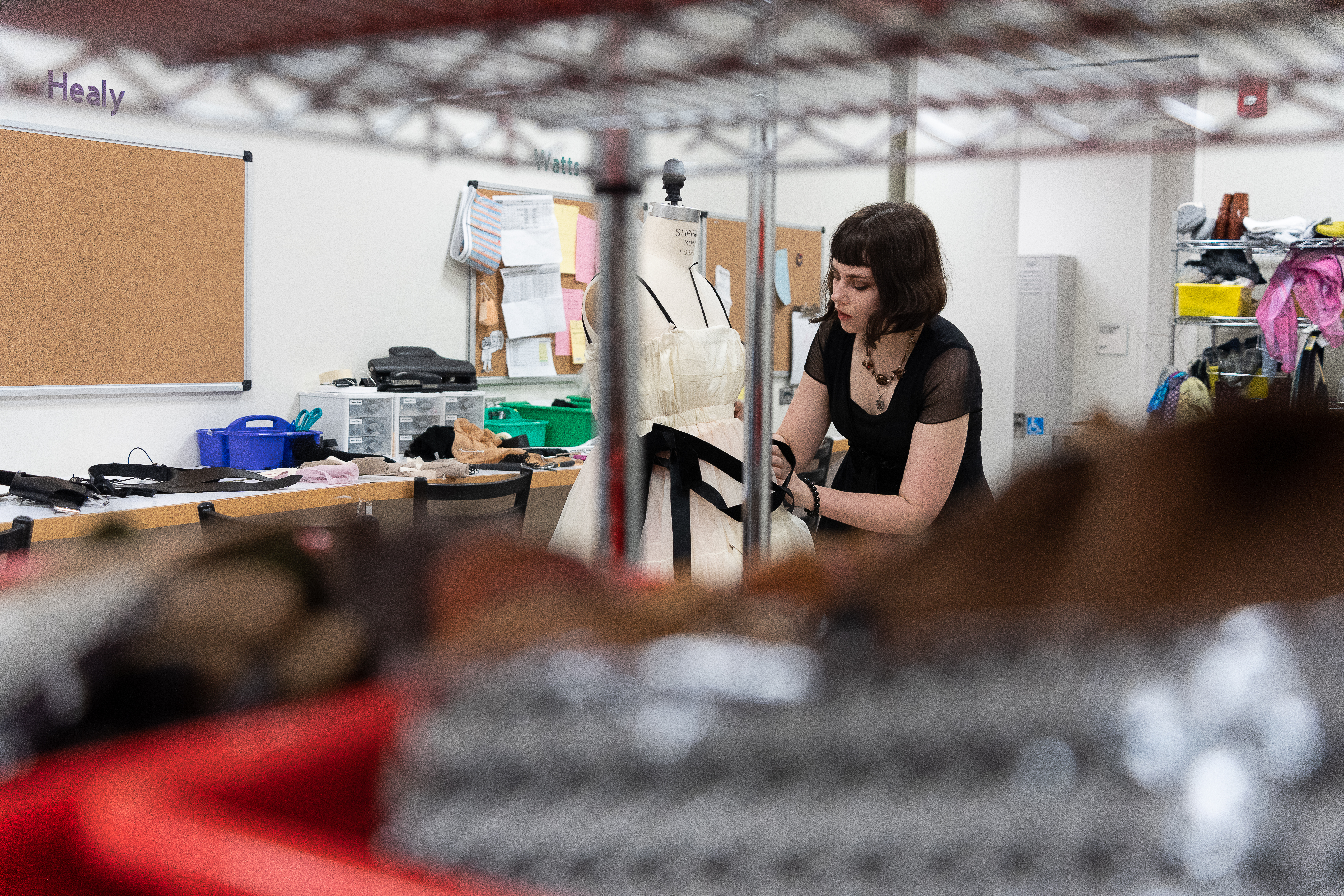
Fourth-year costume design student Madeleine Shows works diligently on a mannequin wearing an in-progress costume. Photo by Emily Soto, 14 East.
“My show is about to open on Friday [February 3] and I’ve been working on it since probably April or May of last year,” said Naomi Arroyo, a third-year costume design major at TTS. “We break over summer, but it is a really long, long process for the designers.”
The lengthy production process begins with paperwork, budget meetings, choosing fabrics and preliminary designs. Then designers have six weeks to work in the costume shop with costume technicians and bring the designs to life. TTS is a unique conservatory because they offer both costume design and costume technology majors for students. Riley Trzeciak, a second-year costume technology major, said this is what drew her to DePaul.
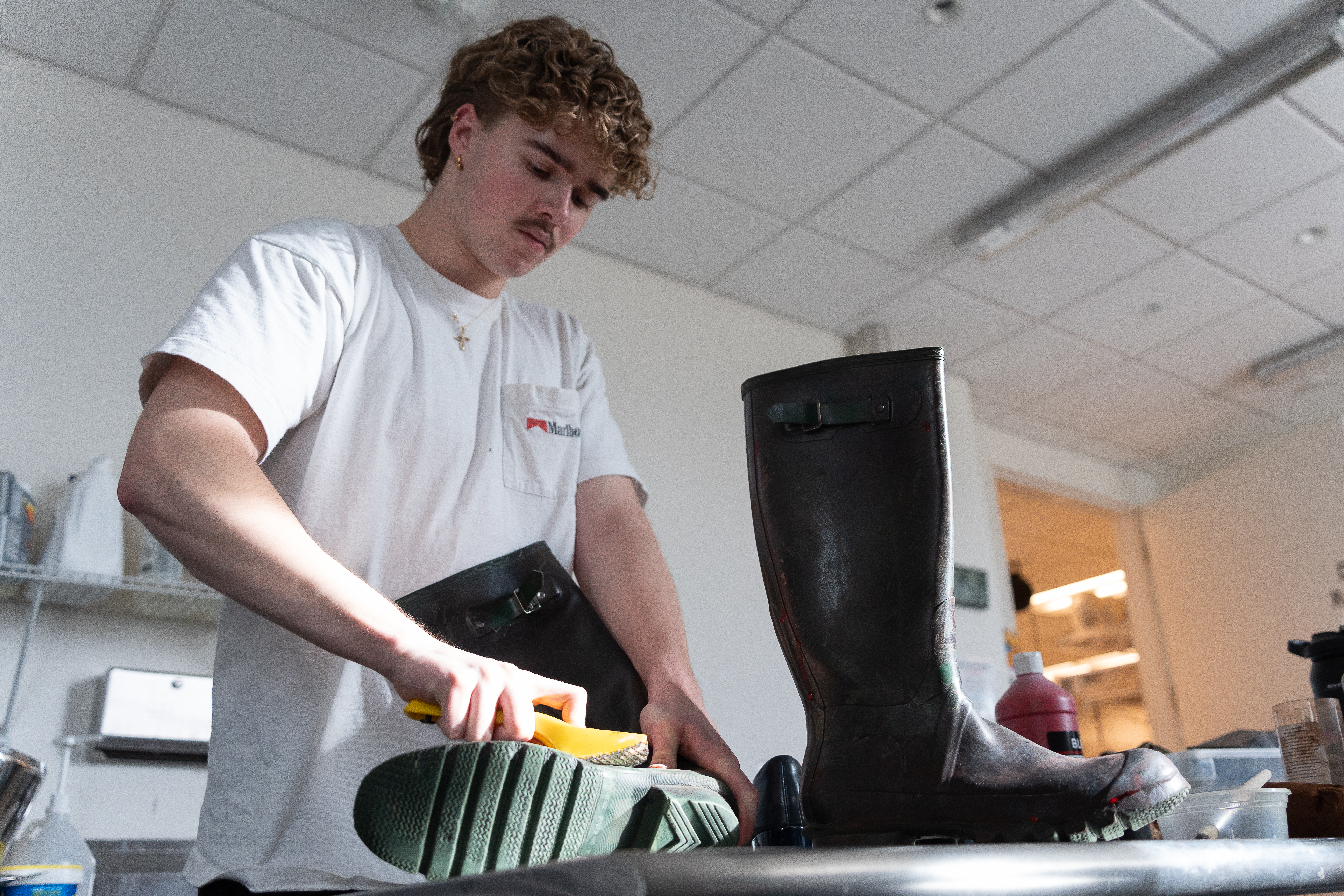
Fourth-year costume design student Avery Lauer works on distressing and painting a pair of boots for an upcoming production. Photo by Emily Soto, 14 East.
“I was interested in technology because I really like making things, but I don’t think my design is a strong aspect of my creativity,” Trzeciak said. “[The program] is really specific, but I think it’s great to develop what I want to do moving forward.”
Trzeciak, along with the other costume technology majors, works on multiple shows per quarter putting together costumes. Everything from sewing garments together to hat making to distressing and aging clothes, costume technology and costume design students are constructing the wardrobe for productions in the costume shop throughout the year. Several people work together on each piece for every show.
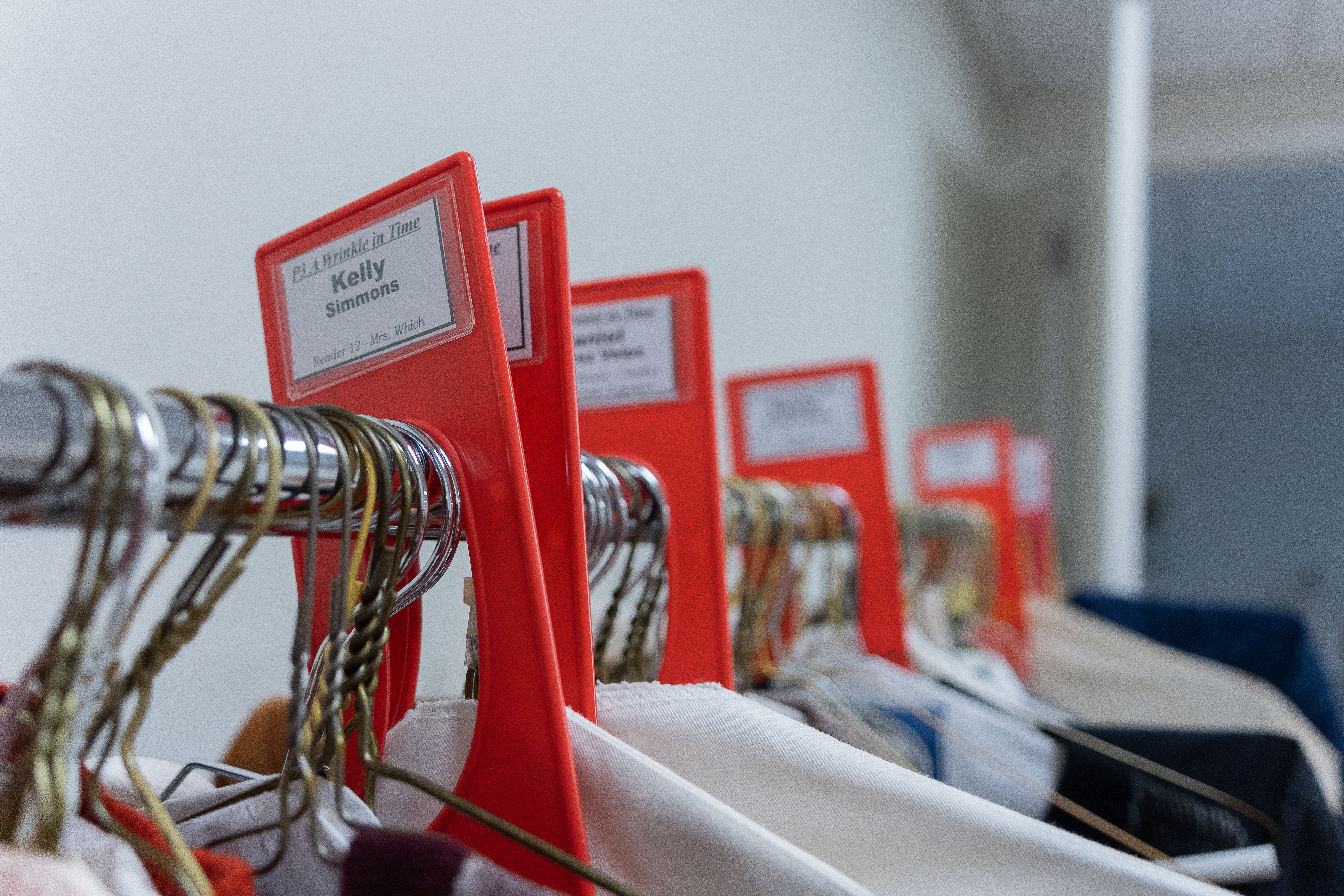
Red tags separate and label costumes for each character and show in order to keep the costume shop organized. Photo by Emily Soto, 14 East.
For one of TTS’s Chicago Playworks shows, Las Wavys, Trzeciak worked alongside her peers in the department to create elaborate costumes for one of the alien characters.
“That was a total collaboration effort, so it’s not like I did all of it,” Trzeciak said. “Mostly everybody in the shop worked on that costume.”
Trzeciak works as a stitcher in the costume shop, meaning she sews everything together with large industrial machines. She and the other stitchers also sew things by hand like buttons, lace and other embellishments to costumes.
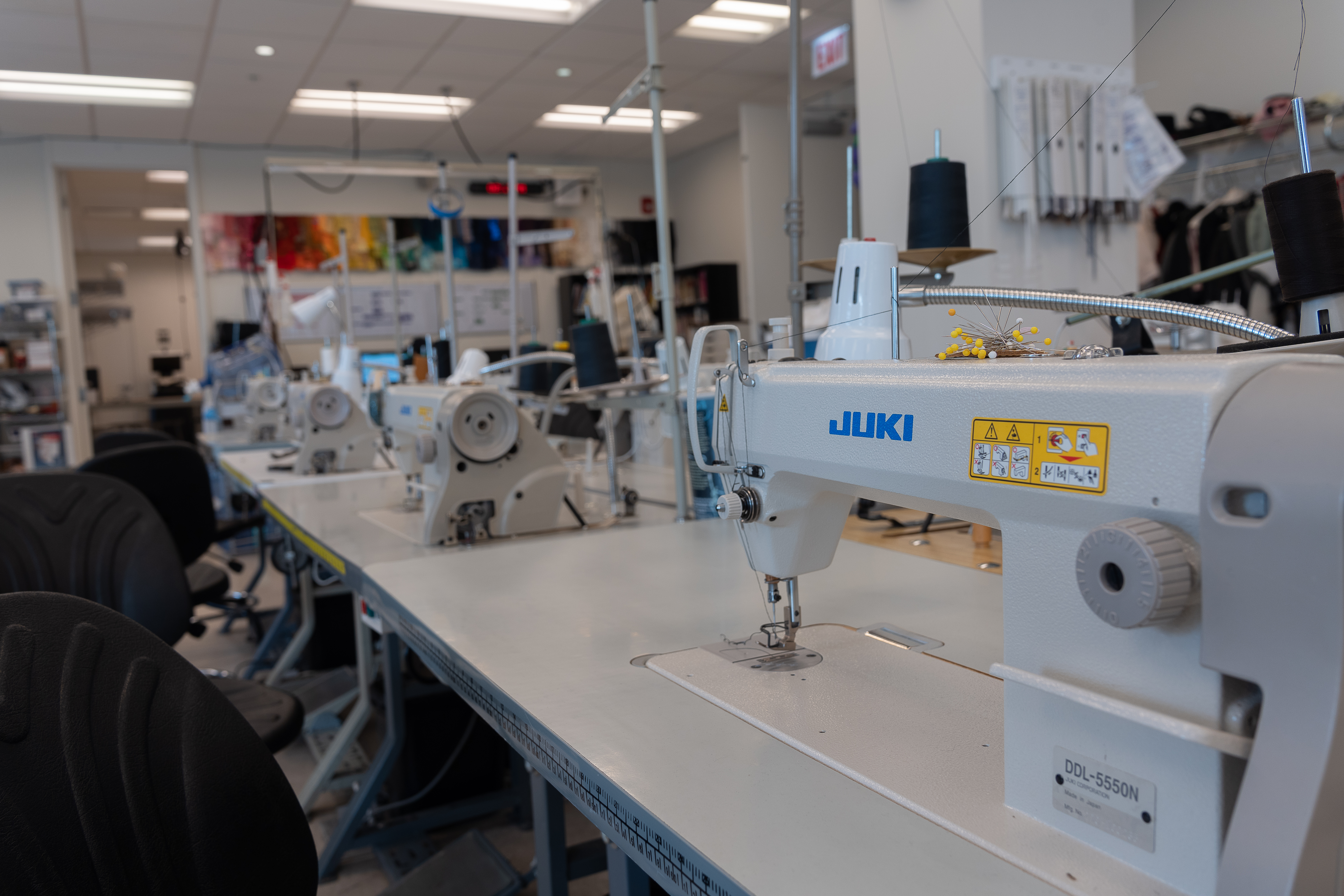
Rows of industrial sewing machines line the room giving designers access to the tools and materials they need to create their pieces. Photo by Emily Soto, 14 East.
Trzeciak said she is fascinated at what she is able to do in the shop and how much she has been able to learn with the hands-on experience.
“My hands can do this? It’s amazing,” she said. “It’s crazy to see my improvements. In other classes it’s hard to see my physical improvements, but standing right in front of me I can see a garment that I created. It’s such a spiritual experience.”
Trzeciak said she didn’t know until she came to DePaul what it took to be in costuming or how intentional each design decision was. Arroyo said people going to see the shows and even those within the theater community underestimate how much work goes into making costumes.
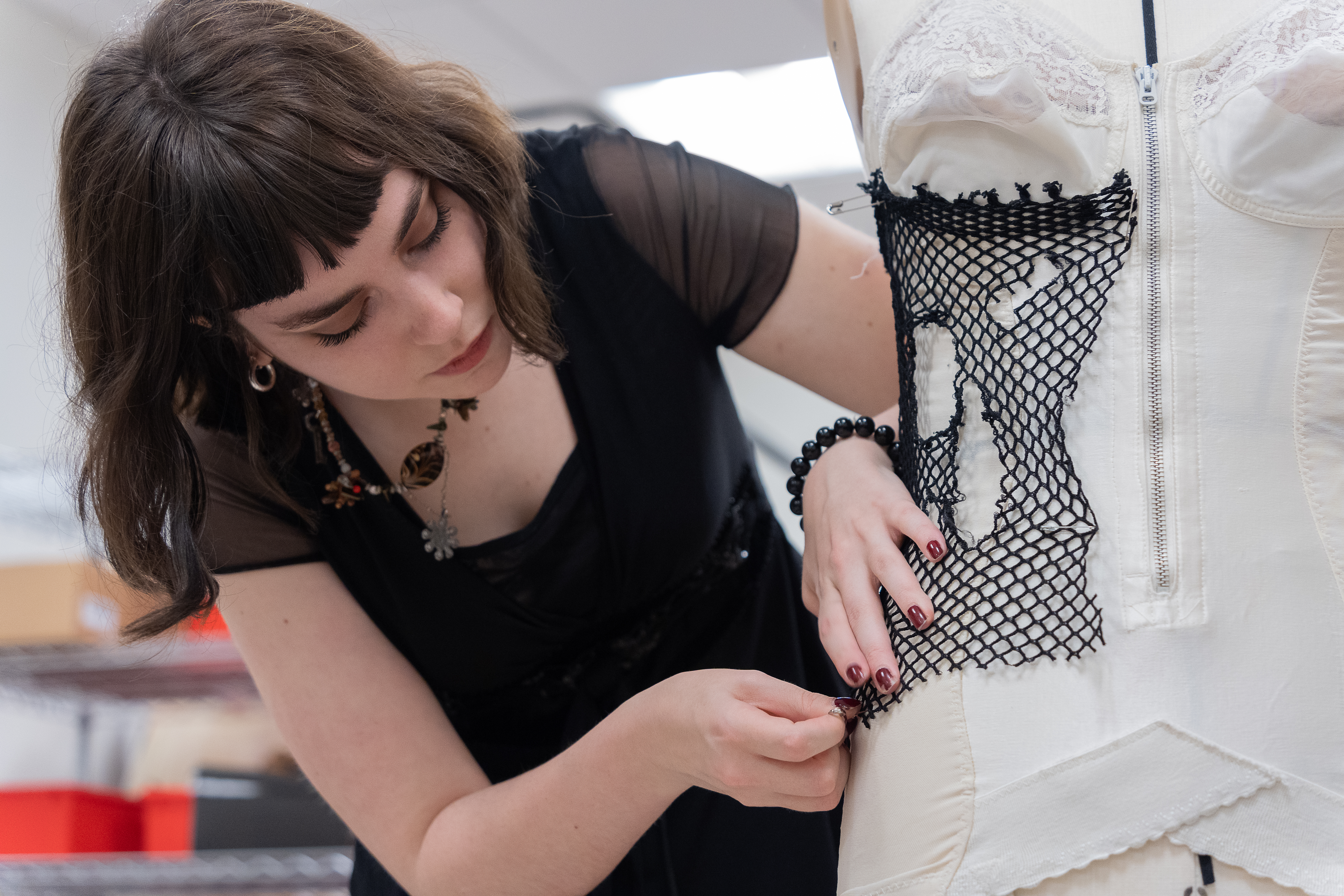
Shows works to add fishnet detailing to a corset top being worn by a costume shop mannequin. Photo by Emily Soto, 14 East.
“Often directors or other people will say, ‘Well, can’t you just change it?” Arroyo said. “Well, there’s a lot to get to the point where we can change what you want. It is challenging, even within theater, to be recognized. We put a lot of work into what we do as well.”
The professional world is similar, Costume Design Department Head Sally Dolembo said. She said people who have been working in theater for decades still don’t quite understand the hours that costume designers put in. For the students in the program, they put in 20 hours a week in costuming on top of classes and outside jobs. During the run of the show, it’s an even larger commitment.
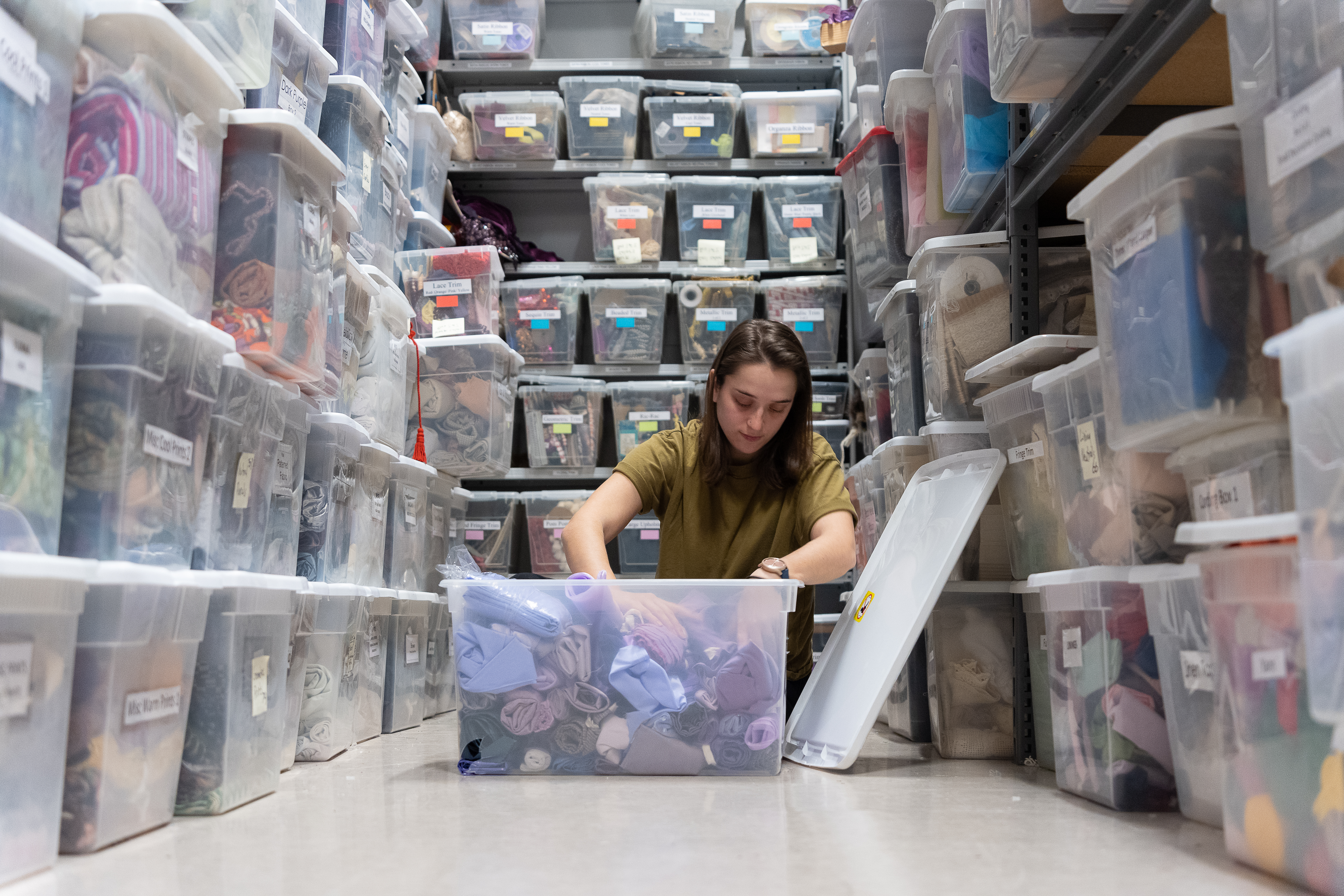
Senior stage manager Kate Petralia sifts through one of multiple bins of fabric in the costume shop. Photo by Emily Soto, 14 East.
“It’s a pretty intense schedule for them,” Dolembo said.
The Theatre School’s costume design department is a small program with a rigorous application process. Every applicant must submit a portfolio of previous work including any photos from productions they’ve worked on, and any progress information such as sketches or research they’ve done for designs. Finally, a TTS faculty member conducts an interview with individual applicants. The program typically admits four students per year.
Dolembo said she wants to see prospective students’ experience as an artist and to hear them talking about their work in a confident way.
“A huge part of being a costume designer is being able to communicate and collaborate and be a leader,” Dolembo said.
Costume designer majors like second-year Anna Finerty, work in the shop and as assistant designers before becoming one of the lead designers for a show in their third year. Finerty is currently working as an assistant costume designer and previously worked as an assistant wardrobe supervisor last quarter.
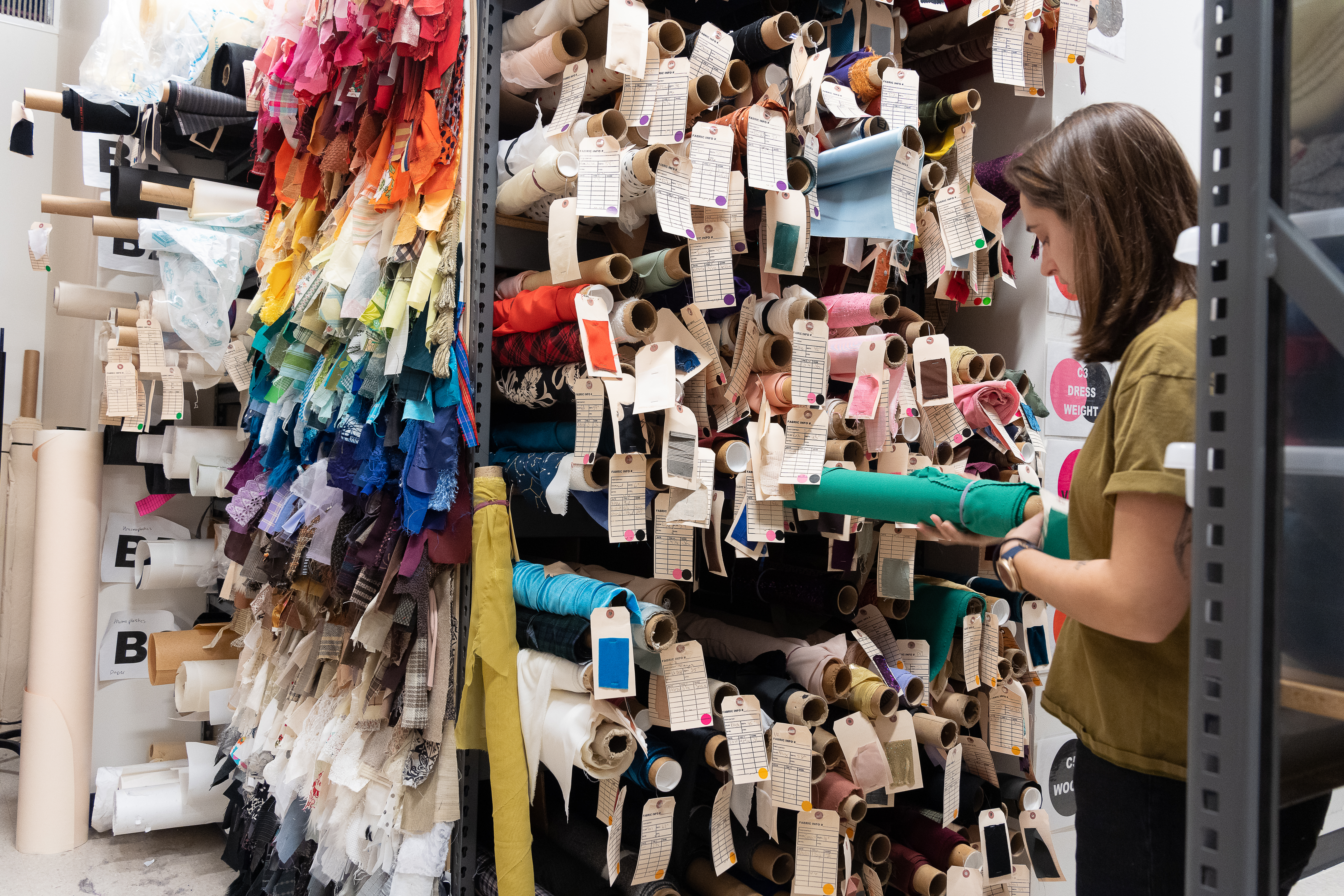
Petralia contemplates which fabric to choose for the project at hand. Photo by Emily Soto, 14 East.
“The program will have you work on the shows to get credit but also show you the different inner workings of wardrobe and costume design in the tech process and design process in general,” Finerty said. “I’m working my way up to being a lead designer.”
For Finerty, storytelling and character analysis of costume design are what drew her in. She knew since middle school that she wanted to do something in fashion design, but was concerned about being able to continuously come up with unique designs. After getting costume design experience at a summer camp, she realized she could still work in fashion but have the scripts and characters to guide her creativity.
“I still have a great appreciation for [fashion design], and actually, I’m finding now I return to that spot in my life and I return to high fashion for my designs,” Finerty said. “I’m kind of merging them together now.”
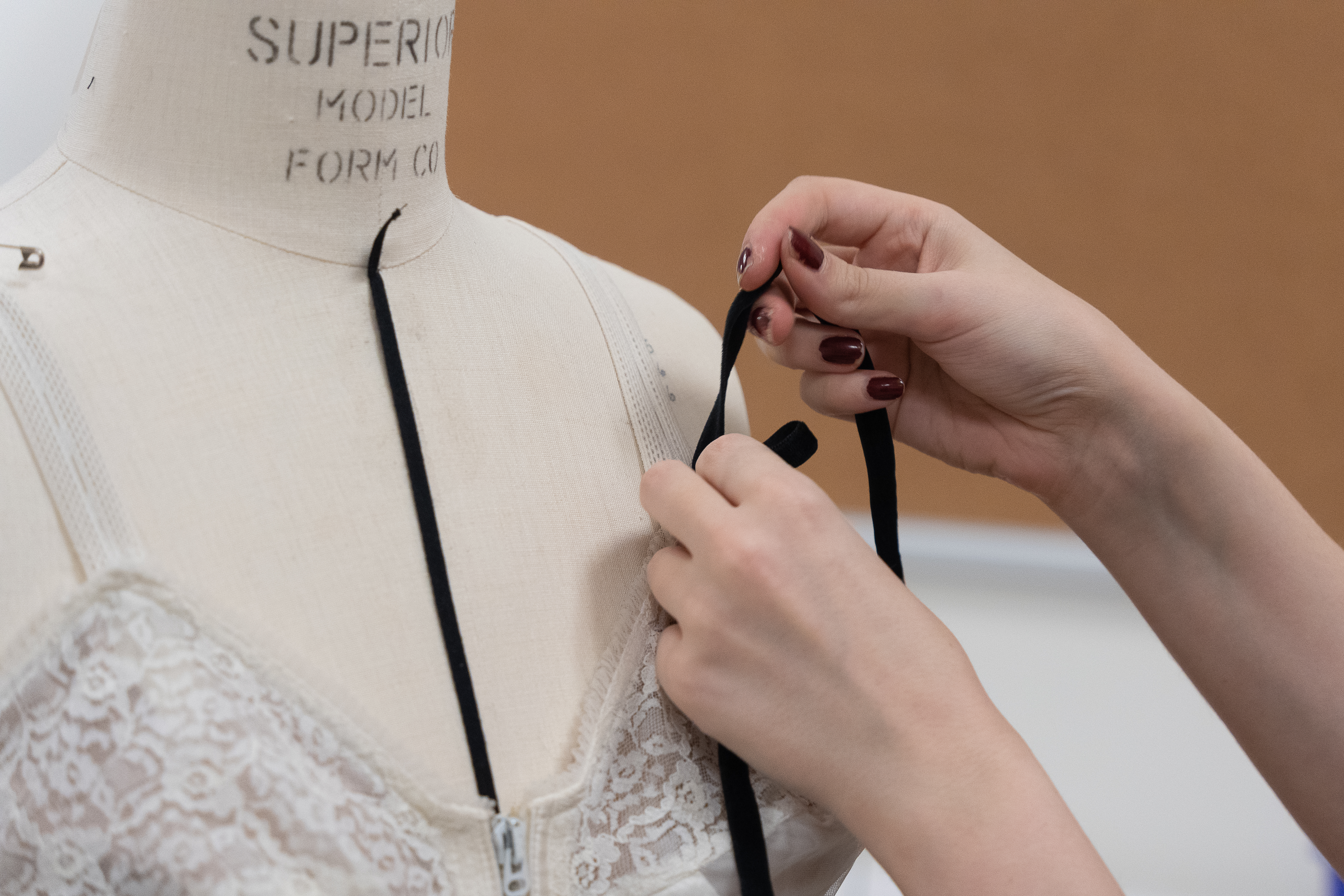
Shows places black straps on the mannequin’s shoulder. Photo by Emily Soto, 14 East.
Trzeciak said it is rewarding to see the work she helped create on stage. During the spring quarter of her first year, she worked on costumes for “Much Ado About Nothing,” sewing diamonds onto a cowboy hat, and she recalled feeling pride in her work as the actor sporting it took the stage.
“Even though I didn’t design it or anything, it was still fun because I held it and now someone is acting in it,” Trzeciak said. “I don’t know how to describe the feeling, it is just really nice. It’s fun to see something that you did that is so small, but it is incorporated into this huge scheme of things.”
Header Illustration by Dayna Teemer


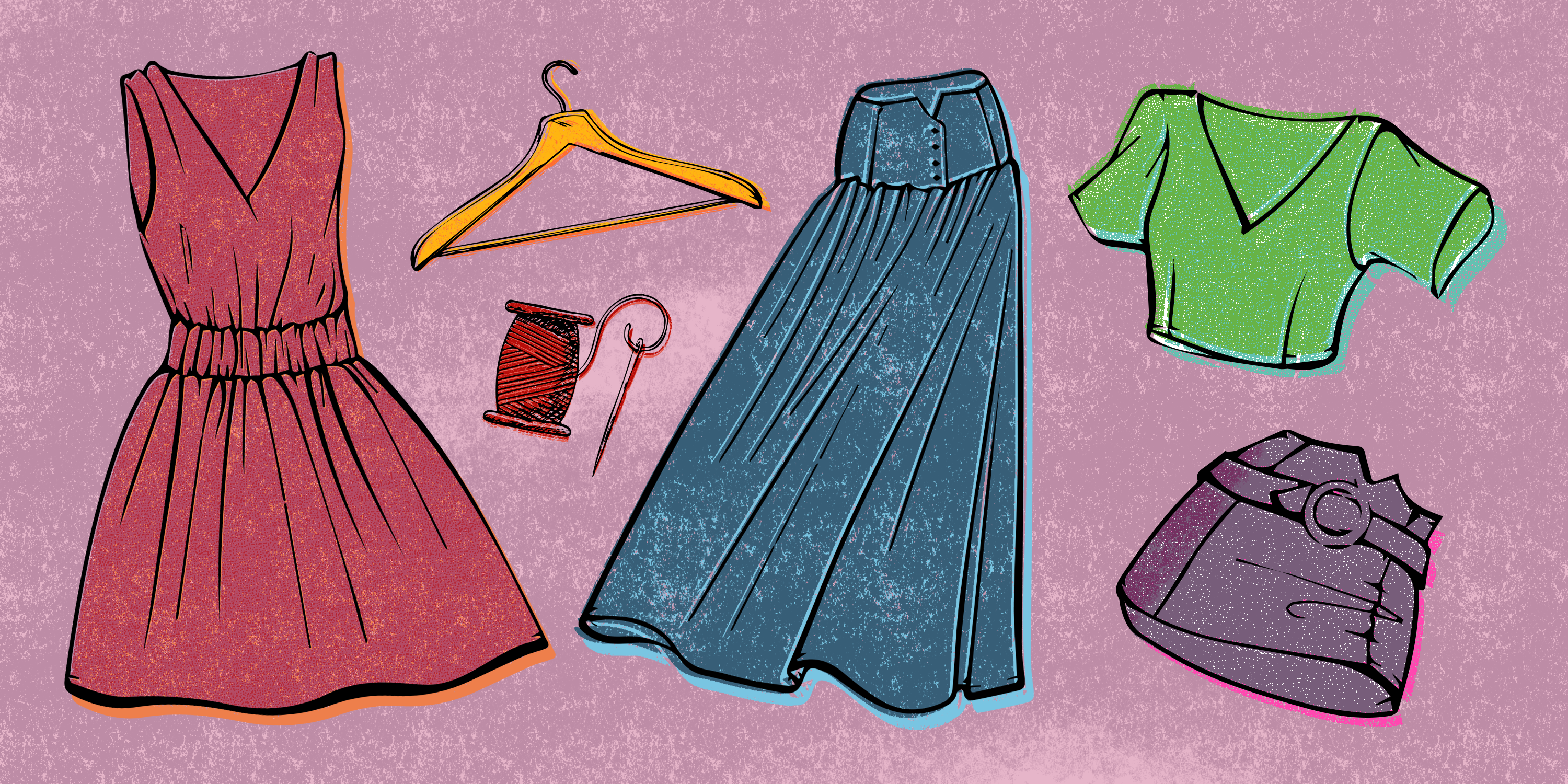

NO COMMENT